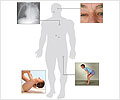Symptoms
The clinical features of McArdle disease varies between individuals, even between affected relatives. The time of onset of typical disease symptoms also varies.
Sometimes, the symptoms of McArdle disease develop during adulthood. At other times, these develop during early or late childhood.
Exercise intolerance with
- Brief exercise of great intensity, such as sprinting or carrying heavy loads
- Less-intense but sustained activity, such as climbing stairs or walking uphill
Moderate exercise, such as walking on level ground, for long periods is possible in most patients. The degree of exercise intolerance varies between patients.
Burgundy-colored urine following exercise is reported by about half the patients. Urine may be described as looking like cola, marsala or red wine. Exercise results in
Fatigue, muscle pain, muscle stiffness and muscle weakness are common in McArdle disease.
“Second-Wind” phenomenon
A “second-wind” phenomenon is unique to McArdle disease. This is described as a sudden, marked improvement in the tolerance to aerobic, dynamic, large muscle mass exercise (walking or cycling) after about 10 min. The excessive fatigue, breathlessness and tachycardia that were triggered by the start of exertion disappear.
Patients with McArdle disease are able to resume exercising if they take a brief rest at the appearance of premature fatigue early during exercise. The second-wind phenomenon is believed to occur in all patients with McArdle disease.









